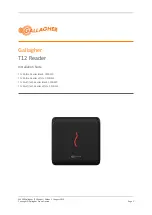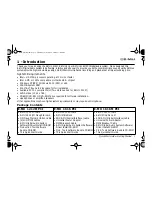
one more thing to do. Nothing is more frustrating than to go from black wool to white and
then discover that the first batts have dark fibers mixed in. To prevent this, I use my secret
weapon. As a standard accessory for your drum carder, get a strong, stiff, long-bristled hairbrush. It
will pick up the last fibers that have resisted your previous efforts: keep brushing up and lifting out,
working with the grain, and watch more fiber come away from the drum.
That should do it. But if you are, indeed, switching colors, check again in good light - it pays
to be paranoid.
Spinning from a batt
For speed and ease of spinning, I don't think you can beat the little batt from hand cards.
That's why I like to hand card my drum-carded batts. However, because I see spinners
struggling to spin drum-carded fibers, I want to offer some tips on minimizing the trouble.
As in other fiber preparations (such as sliver and roving) where the fibers are laid out in a
continuous, overlapping strip, it's difficult to get the fibers in a drum-carded batt properly
attenuated before they lock up. There are several ways around this problem. Some spinners work with
short pieces of roving or sliver folded over the ends of their index fingers, retaining and controlling the
fiber supply with the rest of their fingers. This technique diminishes fiber overlap and makes spinning
easier, because the fibers are pulled off the tip of the finger and enter the twist zone folded in half. You
can use this method to spin drum-carded batts of medium to long fibers. Pull a narrow strip from the
side of the batt and divide in into 3 to 4 inch long segments (7.5 - 10cm), depending on the length of
the fibers. Fold a strip over the end of your index finger and hold onto its tail, just as you would a
roving. You will have slightly less control than with the standard long draw, and your spinning will be
slower, but this works reasonably well if the
carding was very thorough. You can also take these segments of a narrow strip and spin them from their
ends. Draft off the side of the fiber segment and not straight off its end. This will keep a moderate
amount of fibers feeding into the twist and will help prevent clumps from locking up the drafting zone.
It's possible to divide the fibers across the grain, instead of with it. Lay a hand or a ruler across the end
of the batt, about 3 to 4 inches (7.5 - 10 cm) from one end (again depending on the fiber length).
Carefully pull away a strip across the end grain. Divide this into two or three parts and you will have
fiber groups that look like hand carded batts- not quite as good, but manageable. If you want to spin
with a long draw, you can use either of these divisions - lengthwise or crosswise. As with roving or
sliver, however, do not try to attenuate fibers from the middle of the fiber supply. Instead, tilt most of
the fibers away from the twist zone and spin off the bottom or side of the mass. Because the fibers
overlap, you will probably need to work father from the twist than you would with a hand-carded batt.
And work with a small amount of fiber at first until you are familiar with how fibers interact in a batt.
Especially with protein fibers, which have "smooth" and "rough" directions, you will find that each batt
has a "grain" and that it spins more smoothly in one direction than another. If you
keep all your segments aligned as you divide them from the batt, you will be able to work
"with the grain" throughout your spinning.

























